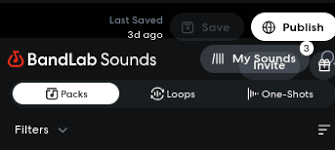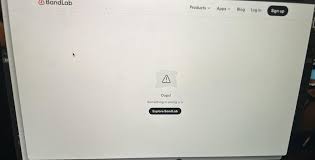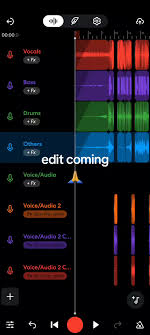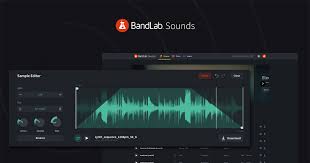If you’ve ever recorded vocals or instruments at home, you’ve probably battled with background noise. Maybe your microphone picked up the hum of your air conditioner, the buzz of your laptop fan, or a faint hiss in the room. That’s where BandLab’s Denoise feature comes in. But what does denoise do in BandLab exactly, and how should you use it without damaging your audio quality?
In this guide, we’ll break it down step by step so you’ll know how denoise works, when to use it, and how it can completely transform your recordings inside BandLab.

The Basics: What Does Denoise Do in BandLab?
The Denoise tool in BandLab reduces unwanted background noise in your recordings, making your vocals or instruments sound cleaner. Essentially, it analyzes the “quiet” parts of your track, detects consistent noise (like hiss, hum, or static), and suppresses it.
Think of it as a filter that keeps your voice front and center while pushing background distractions out of the way.
Before Denoise: Your track has faint buzzing, air hum, or static.
After Denoise: The unwanted sounds are reduced, giving you a smoother, more professional recording.
BandLab’s denoise effect is particularly helpful because most creators record in non-studio environments — bedrooms, dorms, or living rooms — where background noise is almost impossible to eliminate.
How to Use Denoise in BandLab
Whether you’re on desktop or mobile, the process is quick and intuitive.
Step 1: Record or Import Your Track
Start by recording vocals, guitar, or any instrument directly in BandLab Studio, or import an existing audio file.
Step 2: Open the Effects Panel
Select the track you want to clean up.
Click the Effects tab in the bottom panel.
Look for the Noise Reduction / Denoise option.
Step 3: Adjust the Strength
BandLab gives you a slider or toggle option to control how aggressively it reduces noise.
Low strength = subtle noise cleanup, keeps natural tones intact.
High strength = stronger suppression but can slightly thin out your sound.
Step 4: Preview and Fine-Tune
Always A/B test by switching the denoise effect on and off. If your recording sounds too artificial, dial the setting back until you find the sweet spot.
Real-World Example of BandLab Denoise in Action
Imagine you’re recording a podcast in your room. Your laptop fan is running, and you can hear faint hissing in the background. Without denoise, the recording feels unpolished.
Turn on BandLab’s Denoise feature, set it at medium strength, and suddenly the hum drops away. Your voice is now upfront, crisp, and ready to publish — no need for expensive third-party plugins.
When Should You Use Denoise in BandLab?
Denoise is powerful, but you don’t need it on every track. Here are the best use cases:
Vocals – removes room noise, breaths, and faint static.
Acoustic Instruments – reduces background hum without altering natural tone.
Voiceovers & Podcasts – essential for clean, broadcast-ready audio.
Collaborations – when your collaborator records in a noisy environment.
Pro Tips for Using Denoise in BandLab
If you want professional results, don’t just slap denoise on every track. Instead:
Record in the quietest space possible – The less noise you capture upfront, the less work denoise has to do.
Pair with EQ – Use EQ to remove low-frequency rumble that denoise may miss.
Use compression carefully – Heavy compression can bring back subtle noise. Apply denoise before compression.
Don’t overdo it – Too much denoise can make your track sound unnatural or metallic.
Alternatives to BandLab Denoise
While BandLab’s denoise works well for most beginners, professionals sometimes use advanced tools for deeper control:
iZotope RX Elements – industry standard for noise reduction.
Waves NS1 – simple, one-slider noise suppression.
Audacity’s Noise Reduction – free alternative with adjustable sensitivity.
The good news? BandLab’s built-in denoise is free, instant, and surprisingly powerful for creators who don’t want to invest in extra plugins.
Common Mistakes When Using Denoise in BandLab
Applying it after heavy mixing – Always apply denoise early in your chain for cleaner results.
Using it on clean instruments unnecessarily – If your track is already quiet, leave it untouched.
Over-reducing noise – If you push it too far, your vocals may lose warmth.
FAQs About Denoise in BandLab
Does denoise in BandLab remove all noise?
Not always. It works best on consistent background noise, but sudden sounds (like clicks or coughs) may still be audible.
Can I use denoise on mobile BandLab?
Yes, the feature is available in both the desktop and mobile versions of BandLab Studio.
Will denoise affect vocal quality?
If used moderately, it won’t. Overuse can make vocals sound thin, so adjust carefully.
Do professionals use BandLab’s denoise?
Many beginners and intermediate creators rely on it. Professionals may use advanced plugins but still appreciate BandLab’s quick cleanup for drafts and demos.
Conclusion
So, what does denoise do in BandLab? Simply put, it cleans up your recordings by reducing unwanted background noise, making your tracks sound more polished and professional. Whether you’re recording vocals, instruments, or podcasts, this tool is a lifesaver for creators working outside of professional studios.
By learning how to apply it correctly, previewing before finalizing, and pairing it with other effects, you’ll get recordings that stand out — even if you’re working from your bedroom.
BandLab’s denoise may not replace high-end audio repair software, but for a free DAW, it’s an incredibly powerful feature that levels the playing field for creators everywhere.








